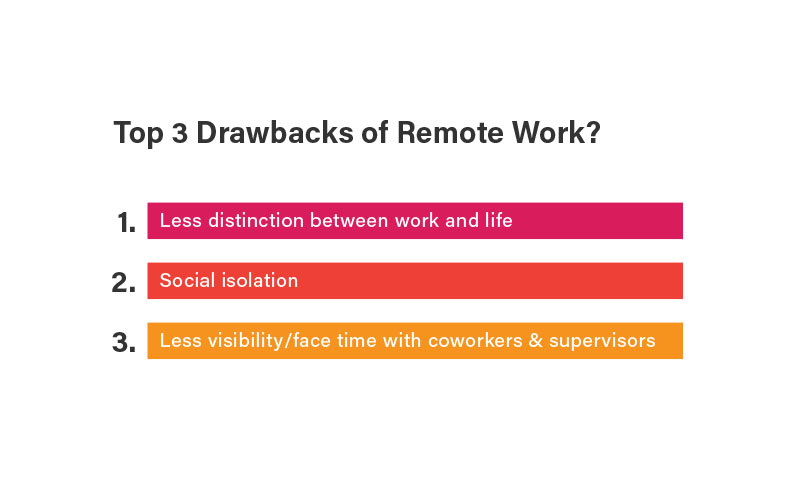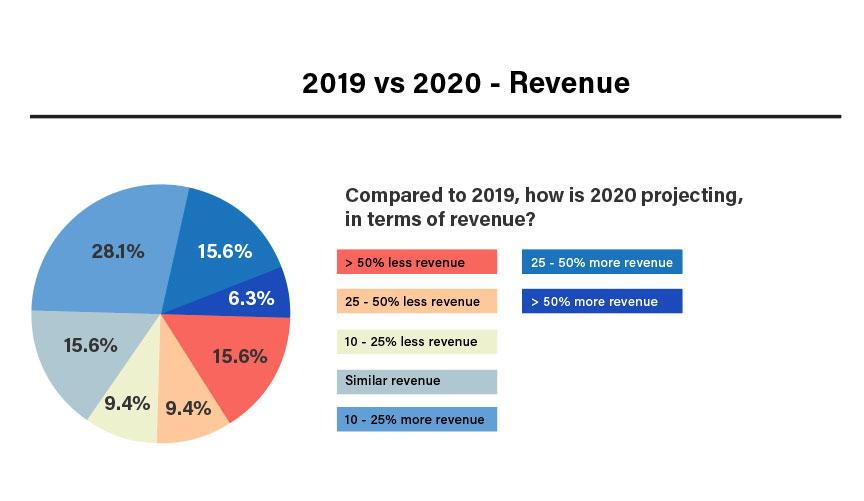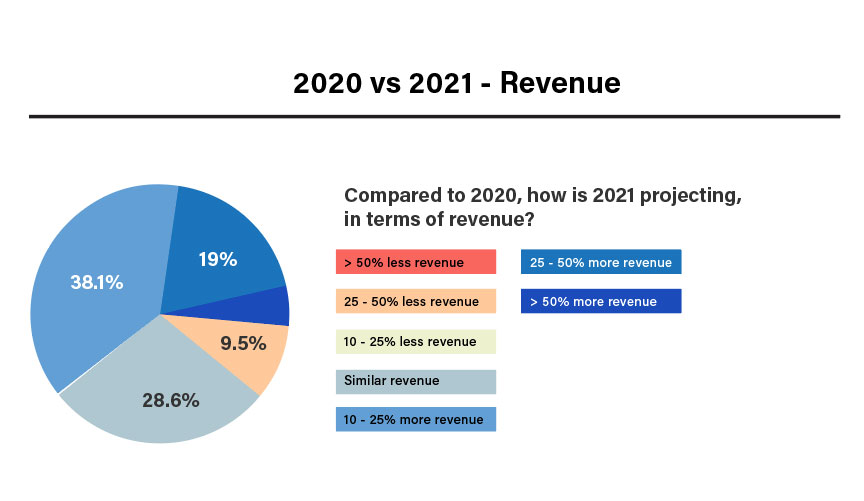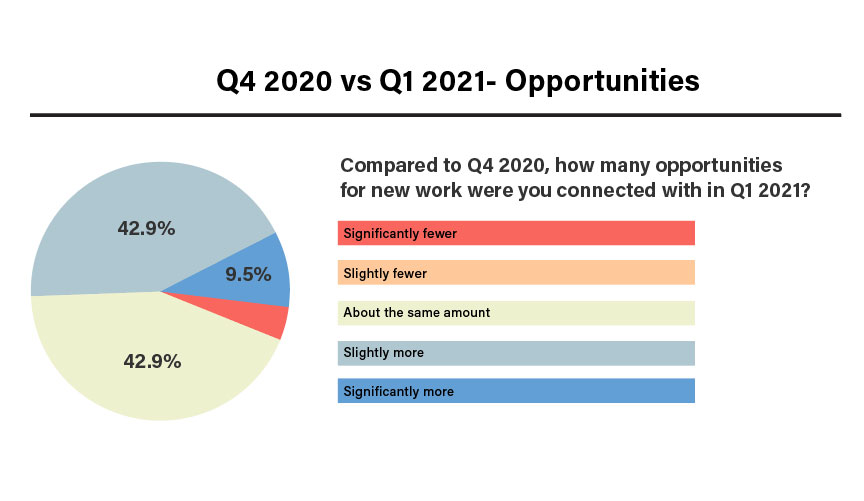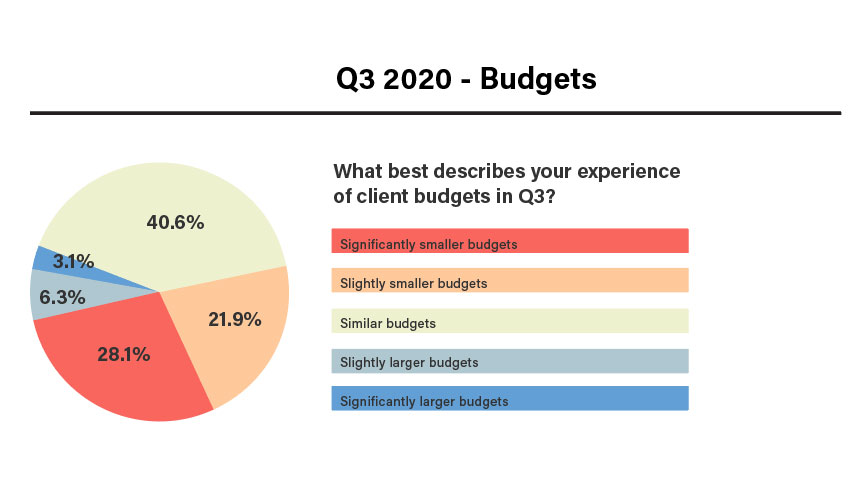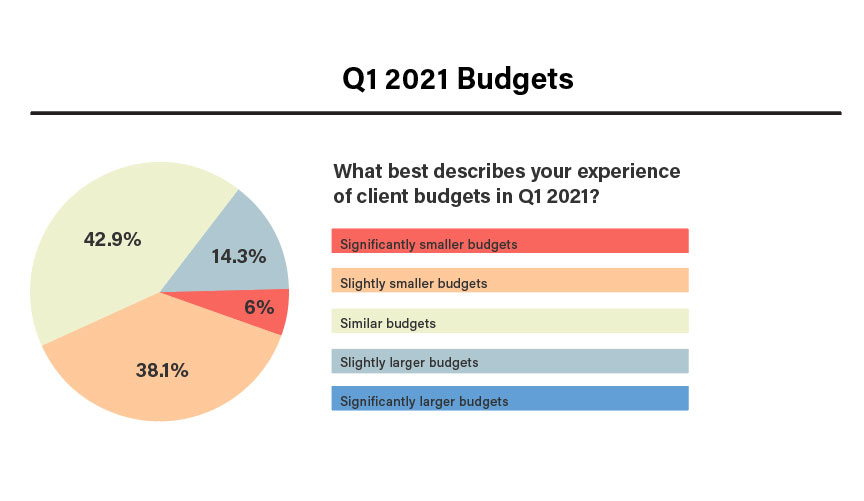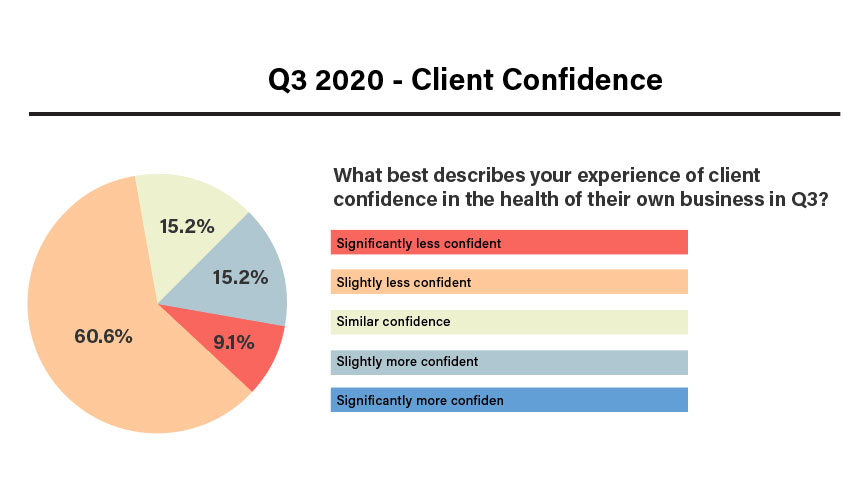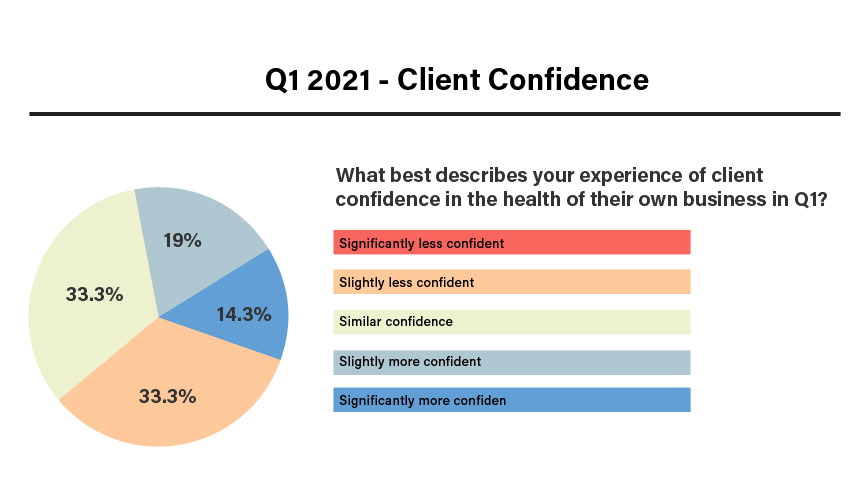The Return
At Gather, we took work-related disruptions resulting from the pandemic in stride.
Most of us are comfortable working from home, along with the social isolation, asynchronous collaboration, and autonomy it necessitates. When we asked Gatherers how they were holding up emotionally, 70% responded “I’m doing OK,” and the remainder replied, “I feel great. I thrive under these conditions.”
However, it’s clear that we will carry the uncertainty that characterized last year well into 2021, complicating the prospect of returning to the office, and more broadly speaking, returning to normal. Some experts think offices will reopen by summer.
Now that executives and employees have had a chance to experience remote work, we believe that this mode of labor is here to stay, in some form, to some degree. A lot of workers appreciate working from home, and spent 2020 internalizing the flexibility of remote work as an expected benefit, even after pandemic concerns subside.
Employers that wish to retain and attract top talent will need to consider these benefits and drawbacks before they call everyone back to the office. We think most organizations won’t go full remote, but instead take a hybrid approach, allowing for several work-from-home days each week, with the goal of allowing workers to actualize the rewards of remote work while mitigating the drawbacks.
In the last Gather Dispatch, we explored big, long trends shaping the future of knowledge work. In this newsletter, we’re zooming in to reflect on the current state of this work in the spring of 2021, and talk to business leaders about how they plan to approach their return to the way things were.
Remote Work Review
We asked the Gather Network what they’re thinking about the current state of remote work, and its near future.
According to a recent survey from PwC of 133 executives and 1,200 office employees, 87% of employers claim that the shift to remote work has been successful for their company, a 10% uptick from their summer survey results. A Gartner survey of 236 HR, real estate, legal, compliance and privacy leaders revealed that more than half of respondents think fewer than 50% of their employees will want to return to the workplace.
We asked Gather network members to rank the benefits of remote work.
The top three responses were:
We also wanted to know how managers were feeling. 42% told us that the managers they work with are happy with remote work. The other 58% said managers weren’t frustrated or happy, but somewhere in between.
Our survey revealed a surprisingly optimistic view of current and future conditions among Gatherers. 35% of us expect 2021 to be a “slightly better” year for new business, with “significantly better” trailing at 25%. Only 13% felt that 2021 would be worse for new business. Furthermore, 35% expect “10-25% more revenue” than last year. Most respondents have experienced more new business opportunities in Q1 of this year, and a majority did not see a dropoff in client budgets. The broad takeaway from our survey is that Gather network members are feeling good about the rest of the year, and mostly expect things to improve as we go along.
At Gather, one of the ways we like to organize our thoughts around work is by breaking things down into the categories of People, Process, Product. Let’s explore how the pandemic has shifted expectations for each of these categories, and how leaders are approaching their return to the office in these terms.
People
The results of our survey indicate that most of us think companies will take a hybrid approach to remote work, even after pandemic concerns recede. How should companies support their people to do their best work as people return to the office?
The origins of the office lie in large-scale organizations requiring a physical location for workers to process data. Governments, trading companies, mercantilists, and religious orders needed a place to store and process written records. In the 17th Century, a new class of professionals arose — lawyers, civil servants, and clerks began to work out of dedicated office spaces, because that’s where the physical logs of data resided, along with the expensive, bulky machines used to process it.
This was the case until recently, when the advent of cloud computing made wide-scale remote knowledge work possible. But today’s quarantined professionals are finding that even when the workspace is untethered from data, there are benefits to office work that they miss.
Research shows that physical proximity increases the level of spontaneous “collision.” These unplanned “water cooler” moments allow employees to develop deeper relationships and bounce ideas of one another. Spontaneous encounters are thought to foster imagination and innovation among employees. A Wired report suggests that AI tools might help to replicate spontaneous encounters remotely, but today’s widespread digital technologies are usually a poor substitute for the emotional connectedness that people feel in face-to-face interactions.
However, Gather Managing Director David Gaspar has been experimenting with a new digital way to connect, and swears it’s the future.
“I didn’t know what I was missing until I was hit in the face with something new — literally,” he says. After an Oculus VR headset arrived on his doorstep as part of an experiential virtual event, Gaspar soon realized that virtual reality has serious potential to improve upon the “flat” experiences we get with Zoom and other video conferencing apps.
I entered an AltspaceVR rooftop overlooking a virtual Manhattan skyline as we sat around a fire pit and replicated an experience as old as civilization itself. As with most new tech, I don’t see this replacing all of my other interaction tools, but it is wildly better at replicating the experience of in-person than anything else I’ve tried to date. In tomorrow’s hybrid workplace, this can be a great substitute for collaboration workshops, serendipitous sparks of collaboration, and of course, cocktail hour. Pro tip on that one — use a straw!
Large organizations are experimenting with the ways they manage their people, setting aside standard protocol to meet workers’ needs. Fast Company reports that Facebook granted all 45,000 of its full-time employees a high performance review, locking in $1,000 bonuses for everybody. Google skipped its reviews altogether, and promoted twice the number of employees as usual in the fall.
The UK-based sustainable energy supplier Octopus made waves recently when its CEO announced that the company has no HR or IT departments. It’s not that the company ignores those functions, only that they are distributed across department managers. Every leader is responsible for making sure their people have the resources — both in human and technological terms — to get the job done. During pandemic conditions, out-of-the-box management techniques like this can help remove logistical barriers — many of us know what it’s like to be waiting for weeks to get a company laptop shipped because the IT department’s been hobbled by pandemic-related constraints. Octopus’s goal is to strip away some of the organizational bureaucracy and give managers the ability to resolve issues and overcome bottlenecks quickly, as they see fit. We may see this practice popularized in the future, as organizations look for ways to streamline their people management functions.
But as we’ve seen in many of our conversations around this topic, it’s not so much logistical problems that affect remote teams so much as team members feeling disconnected or atomized as a result of their physical distance from their colleagues. When employees don’t feel emotionally synchronized with their coworkers, their productivity can crater.
Part of solving this problem is the maintenance of corporate culture in a distributed work setting. Mimi Sun Longo is a project manager at Gather who has also taken on the mantle of community manager for 2021. This role is more crucial for us than ever, as company culture and belonging are notoriously difficult to maintain under work-from-home conditions. Mimi is working hard to enhance interconnectivity between our network through remote team-building activities, interest groups, knowledge sharing, and spontaneous digital gatherings. Mimi shared with us some of her thoughts on remote work and the possibility for re-opening.
The biggest challenge is that when you’re starting up a Zoom call, it takes a long time before people actually start to feel like they’re not being watched in professional capacity. You can remove people from the office and put them in a bar and their body language will change, their posture will change, and they’ll be able to relax — even during the walk from the office to the bar!
During the various happy hours and other extracurricular Zoom hangouts that she hosts, Mimi encourages people to take their laptops into a more comfortable room, and that even subtleties like a change in lighting can help delineate between work time and fun, community-building time.
“If you’re looking at your computer and you have the same light on your face in the same environment that you’ve been the professional in all day, it’s hard for you to change your mindset,” she says.
But as for re-opening soon, Longo is hesitant.
Testing the water through surveys, like we did, is a good first step. Seeing what the top concerns are for your team and making those a priority will instill trust and encourage people to return. But posting a deadline won’t help right now since we don’t know how long it will take for everyone to get a vaccine, and added pressure will only add more stress to an already stressful situation.
Perhaps giving people a choice is the best way to handle a re-opening. That’s what Microsoft is doing. Like many large firms, they are taking a hybrid approach, but after finding out that over 73% of workers they surveyed want more flexible remote work options to continue, they made their return to the office voluntary.
Process
Companies have been forced to experiment with how work gets done, and they’ve introduced exciting new tools and methodologies to keep everyone on the same page. But what’s work going to look like when offices start to open back up?
Office managers are trying to reimagine what a safe office looks like in the near future. Perhaps we will return to the cubicle farm. Or maybe plexiglass and floor stickers will suffice. Maybe the built environment of the office matters less than the management of people, and office managers will arrange for workers to space out more distantly and work in shifts to minimize transmission risk.
But if, as we suspect, some of us are going to be staying home for a while, we’ll need to figure out how to replicate the rewards of office work in our own homes. However, much of modern knowledge work is defined by processes that were built in and for the colocated office. Project managers, in particular, are thinking about new ways of structuring and facilitating distributed teams. Sometimes this means encouraging an agnostic approach to work hours, with team members Slacking one another asynchronously, and not expecting to get immediate replies. Or maybe it’s about implementing new software tools, even experimental ones like VR, to keep workers in sync. According to a McKinsey survey, the pandemic has resulted in a surge of digital transformation.
Danielle DeGrazia is a project manager and senior director of Transformation Enablement at Gather. She has had a long career leading large cross-functional teams inside enterprises, so she has a strong understanding of what it takes to align a lot of people who may never have worked together before, very quickly.
Although many of our conversations point to a hybrid future, where some employees are given the option to work from home some number of days out of the week, DeGrazia points out that this hybrid approach can lead to a worst of both worlds scenario.
“It’s so difficult to have half the people in and half the people out,” she says. “Because strictly in terms of process, people can’t participate well.” DeGrazia conjures a hypothetical workshop where the folks at dialing in from home can’t see each other, or can’t see what someone is pointing to on a whiteboard in the office, or miss an important point because their connection dropped out for a moment. “It’s very disruptive,” she says, “and I’ve never really seen that done well.”
But beyond the practical logistics of making a hybrid approach work, DeGrazia is even more uncertain about the social or emotional implications of the hybrid model as a default mode. Building trust between team members is crucial for making sure the project sustains its momentum. She argues that being intentional about seemingly trivial smalltalk — “What’s the weather like there?” “How are the kids?” — can go a long way to reinforce the bonds that cement team solidarity. It’s difficult to build trust — and easy to lose it — when you aren’t getting regular facetime.
Co-location is especially important, she says, in the early stages of a project, during a phase she refers to as “norming.” This period involves employees getting to know one another’s personalities, strengths, and communication styles. It’s a process that happens organically, and it’s difficult to replicate through a Zoom chat.
“I like to anchor my new teams,” DeGrazia says about this early phase. “And you have to be in person. That was always my rule before the pandemic. And then sometimes there are touch points in between where you’re having a difficulty, and you want to bring people in for workshops… you really need to be there.”
Product
Pandemic conditions changed the way customers engage with lots of different kinds of products, from healthcare to hamburgers. Now companies are forced to rethink the entire customer experience with their products.
Perhaps no industry has felt the brunt of the pandemic as severely as food service, but fast food restaurants are doing fine. Many are equipped with drive through lanes, enabling customers to easily pick up their food. Now other restaurants are exploring this means of distribution. The Wall Street Journal reports that Shake Shack, Chipotle, and other fast casual restaurants are investing in drive throughs.
This phenomenon is an example of how organizations are shifting their approach to product to meet changing customer needs. Innovative companies are also finding ways to quickly adapt how customers think about their product through marketing strategy shifts. Last year, Levi’s hosted daily “501 Live” virtual concerts at 5:01 p.m to replace their live events. Many are similarly pushing hard into digital, transforming what would have been IRL events into digital experiences.
Other companies are updating how customers engage with their product in terms of distribution and design, and even changing the core nature of products themselves or offering entirely new product lines. For example, Banana Republic and other clothing retailers are making face masks.
Producer Jason Oberholtzer’s product is podcasts. He’s been producing audio with high production values for Gather over the last half a decade. The logistics of audio production are minimal when you can get hosts and guests into a studio environment. But how do you coordinate recordings when hosts and guests would prefer to stay home? We’re going to paste his answer in full because it’s too poetic to abridge:
You know how the joke was that every job, at a certain point, was just a different genre of answering emails? Well, this year it started to feel like logistics/shipping/warehouse management was added to that. Between audio, video and digital event production, everyone working in production was mostly answering emails and managing packages flying all over the world: a small, flexible kit for field audio packed in a pelican case and sent to Italy over a month in advance so it can sit in customs for a few weeks; a tape-yourself podcasting kit packed in a slightly larger pelican case and sent to a podcast guest whose only availability was while they were riding out the pandemic on a boat; a fleet of even larger pelican cases with cameras, lighting gear, microphones, and all the attendant stands, cords and adapters, inching their way across the country to arrive at half-day-long tech check and setup sessions over Zoom with a gaggle of important people’s assistants. Oh, the hours spent on Zoom trouble-shooting tech with important people from all walks of life.
These are all real examples. Jason tried to develop relationships with reliable local production talent and gear shops, but often the best solution was to pack up everything the on-air talent might need in a box and pray that UPS wouldn’t lose it. “Spoiler alert: They do, frequently,” Jason says (editor’s note: Our new client, FedEx, would never). In 2020, Jason’s logistical expertise gained from years working at a warehouse served him as well as his experience in audio production.
Jason has had to totally rethink how he approaches production, down to its fundamentals, but now that he’s made this shift, he recognizes how limitations forced him to come up with new, and in some cases, better, methods — methods that will remain in his tool belt even after pandemic conditions recede. Jason concludes, “After this year, you’ve got no more excuses; we can get anyone on mic, anywhere. Try and dodge me now.”
Rudy Chang is a digital transformation advisor, product architect, and agile coach at Gather. He helps clients re-envision their strategies, platforms, and business models, and he possesses a deep understanding of how external factors can necessitate new product approaches.
One of the big trends Chang has observed is a radical re-prioritization and acceleration of business objectives. To use an earlier example, Shake Shack was probably already deep into their drive-thru strategy, but the pandemic accelerated the adoption of this new delivery model.
There is a second, related trend at play, in which organizations are being forced to think about the entire experience customers have with the product as core features of the product itself. Before, the experience of Shake Shack was more than just a burger. It was also sitting down with friends or family in a relaxed environment. To tweak the delivery mechanism is to tweak the product experience, and thus the product itself. Because the pandemic has so deeply disrupted the way consumers interact with many types of brands — from finance to healthcare to hamburgers — organizations are fast-tracking innovation in the experiential features of their products. What were secondary, nice-to-have goals are now mission-critical.
Thirdly, Chang has observed a trend toward the acceptance of tradeoffs, both by companies and their customers. Brands are willing to accept tradeoffs, as opposed to a perfect product launch, if it means they can get the product in front of a consumer expediently. Consumers are also willing to make such trades, accepting imperfections if they can access a product quickly.
In the early days of the pandemic, grocery stores struggled to ramp up their home delivery service capacity to meet the spike in demand. Customers were desperate for basic groceries, so even though new delivery workers made frequent errors due to their limited training, consumers were willing to deal with these mistakes, so long as their orders were fulfilled at all. This mindset characterizes our current age, but may linger on, long past lockdown, with time-to-market taking precedence over the flawless product launch.
It’s difficult to talk about silver linings when the cost of the pandemic has been so painful, but it’s undeniable that the limitations forced by the pandemic have resulted in exciting business transformations that may have been delayed for much longer, or never happened at all. As we think about re-opening, businesses will need to re-evaluate their People, Process, and Product strategies, and think about what consumer behaviors or externalities might not ever go back to “normal.”
Spring Forecast
According to our survey respondents, things are looking up. Consultants are expecting to unlock new business opportunities and more revenue, resulting from strong client budget rebounds.
Gather survey respondents are optimistic about the coming year, even more so than they were last quarter.
We are increasingly unlocking new business opportunities compared to six months ago.
And in general terms, our assessment of client health is improving, compared to six months ago. We perceived client budgets to have increased across the board, along with their general confidence in their businesses.
Another general takeaway from our survey is that a lot of people don’t know what to expect about the near future of office work, and those who think they know don’t share the same expectations about what that will look like.
57% of respondents say that clients have “no defined plans” to re-open offices. 24% predict Q3 re-openings, 9% say Q4, and another 9% don’t anticipate their clients re-opening until early next year. More than half of respondents say that they expect their clients will take a hybrid approach to remote work after the pandemic subsides.
On the question “When do you think offices should re-open?” answers were split evenly between the upcoming four quarters and “Too early to even think about,” with the latter response taking a slight lead at 28%.
PwC’s survey indicated that 75% of executives anticipate that at least half of office employees will be working in the office by July 2021. Only 13% of these executives plan to take their companies fully remote. Gartner’s research suggests that most legal and compliance leaders don’t foresee a return to “normal” business operations until the fall.
The question in our survey that is perhaps the most indicative of real preference is “Would you fly to attend a corporate event this spring.” Event planners may be interested to know that 67% say “no,” and only 33% say “yes.”
We also asked respondents to rank precautionary measures for office re-openings.
The top five responses were:
1. Office mask mandates
2. Employee vaccination status disclosures
3. Routine office disinfection procedures and installation of sanitizing stations
4. Strict limitations on room capacity
5. Alternating schedules for employees coming into the office
The results of our research, and that of others, indicate fiercely divergent attitudes about re-opening offices, and what “returning to normal,” ought to look like. Workers have different lifestyles and personalities, which will impact their preferences about how they want to do their work. Perhaps the best decisions that organizations can make will be to put as many decisions as they can in the hands of their workers. This approach naturally fails to satisfy those who prefer in-office collaborations. These workers don’t just want to be in the office, they want everyone they work with to be there too, to facilitate collaboration and connection.
Maybe a way to split the difference in a hybrid approach is to take an example from a company that’s been doing remote work for over fifteen years. Automattic, the people behind WordPress and more, holds an annual “Grand Meetup,” wherein they gather all 1,200+ employees to a single city for a weeklong gathering. It’s an opportunity to meet face-to-face, share knowledge, collaborate, and build social cohesion. Apart from this big gathering, the company also pays for its teams to meet up somewhere in the world — often in very cool, vacation destinations — to help maintain this cohesion throughout the year. Obviously, IRL meetups were put on hold in 2020, but after Covid has been overcome, such occasional gatherings present one way for workers to maintain connections even when half the office chooses to stay home.
When we spoke to Danielle DeGrazia, she argued that if you can bring people together in the same physical space as a project kicks off in order to reinforce the team structure, shared responsibility, and norms, “we can kick ass no matter where we are.” As we think about re-opening, let’s remember — that’s the goal, not “returning to normal.”
Here’s to kicking ass this spring.
***

